Nokia 5.4 review: Behind the curve
This cut-price Android handset looks great, but doesn’t do enough to convince
-
+
Exceptional value
-
+
Great design and build
-
+
3.5mm jack
-
-
Weak performance
-
-
Reduced battery life
-
-
No 5G support

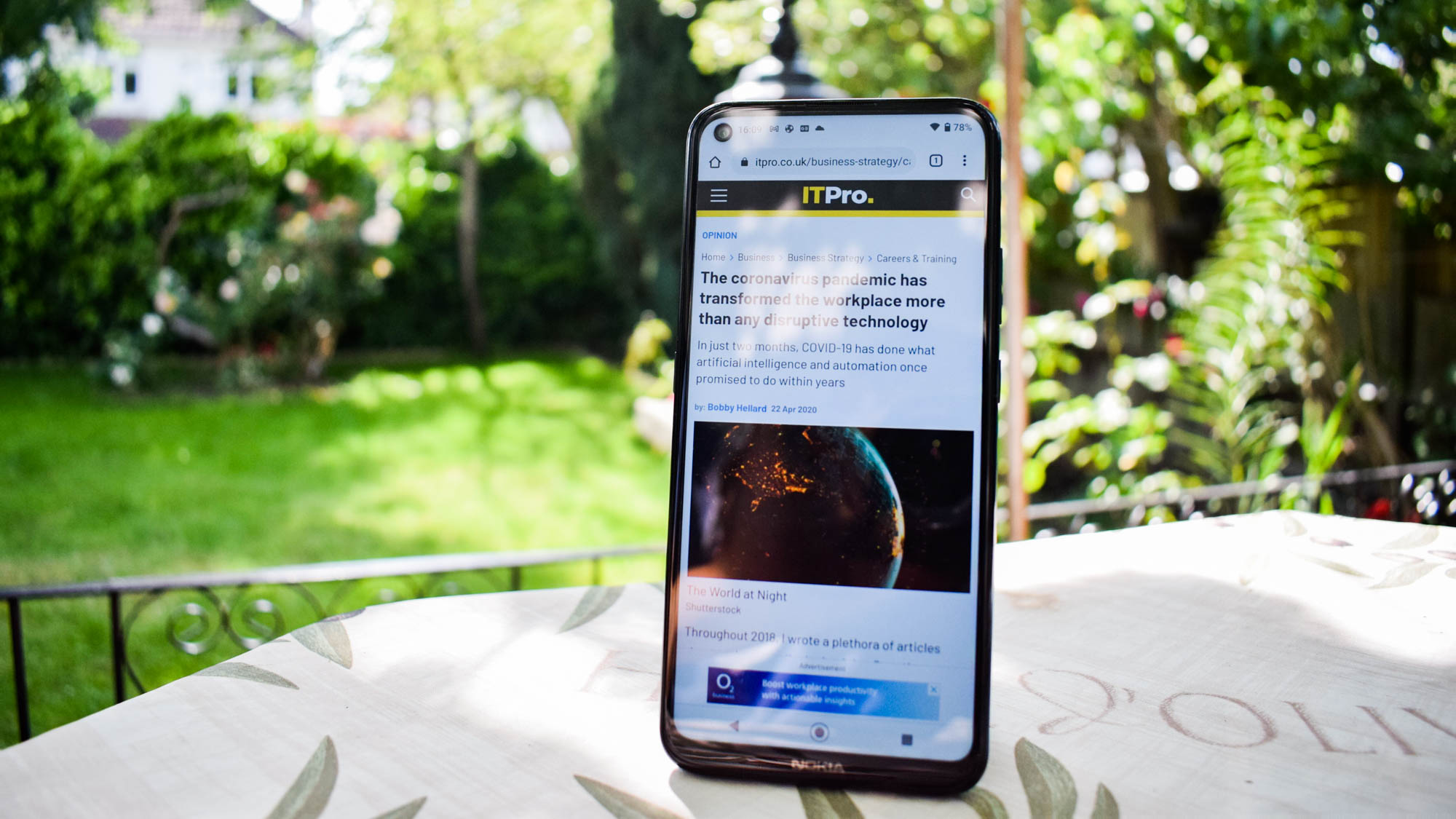
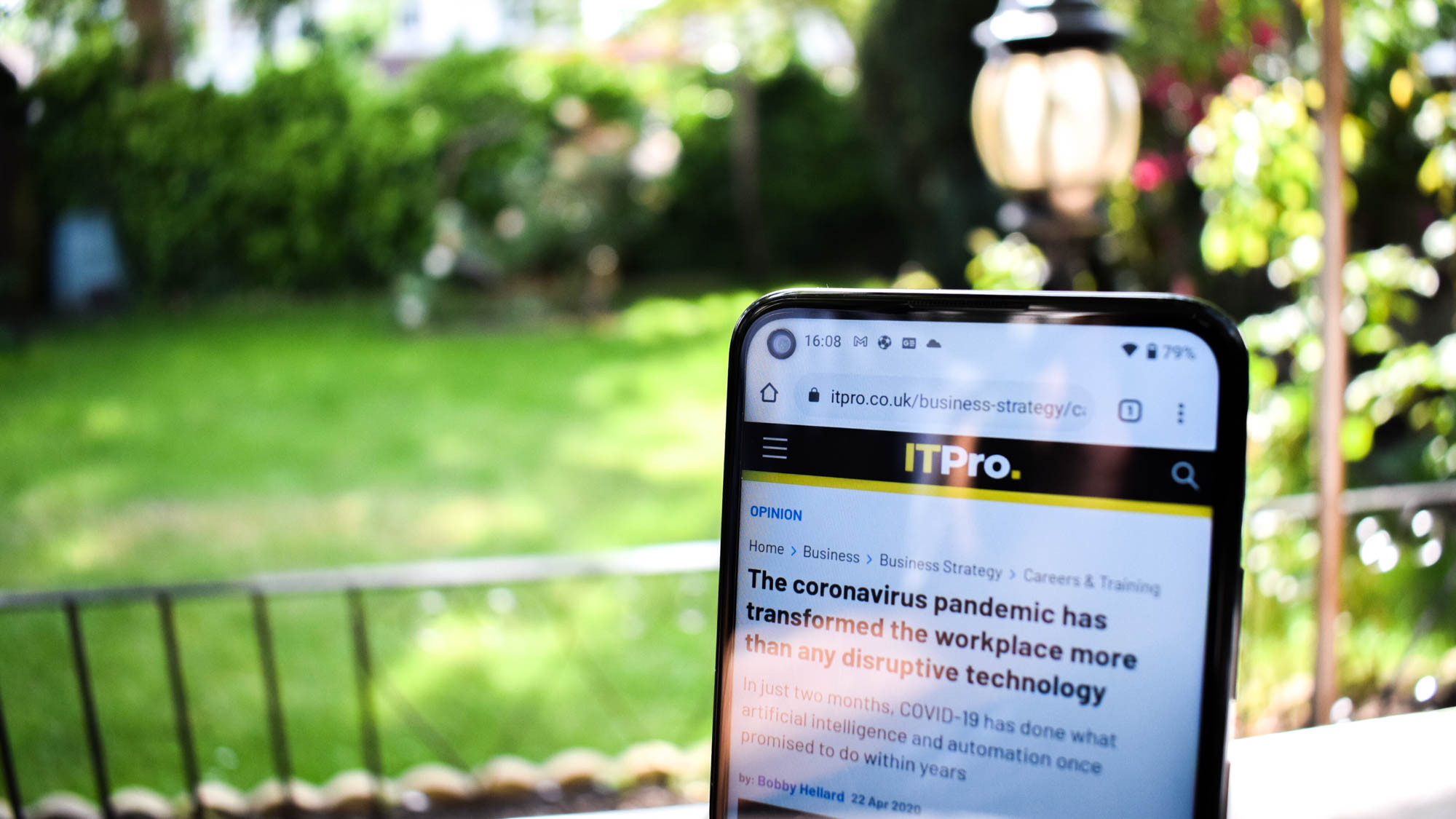
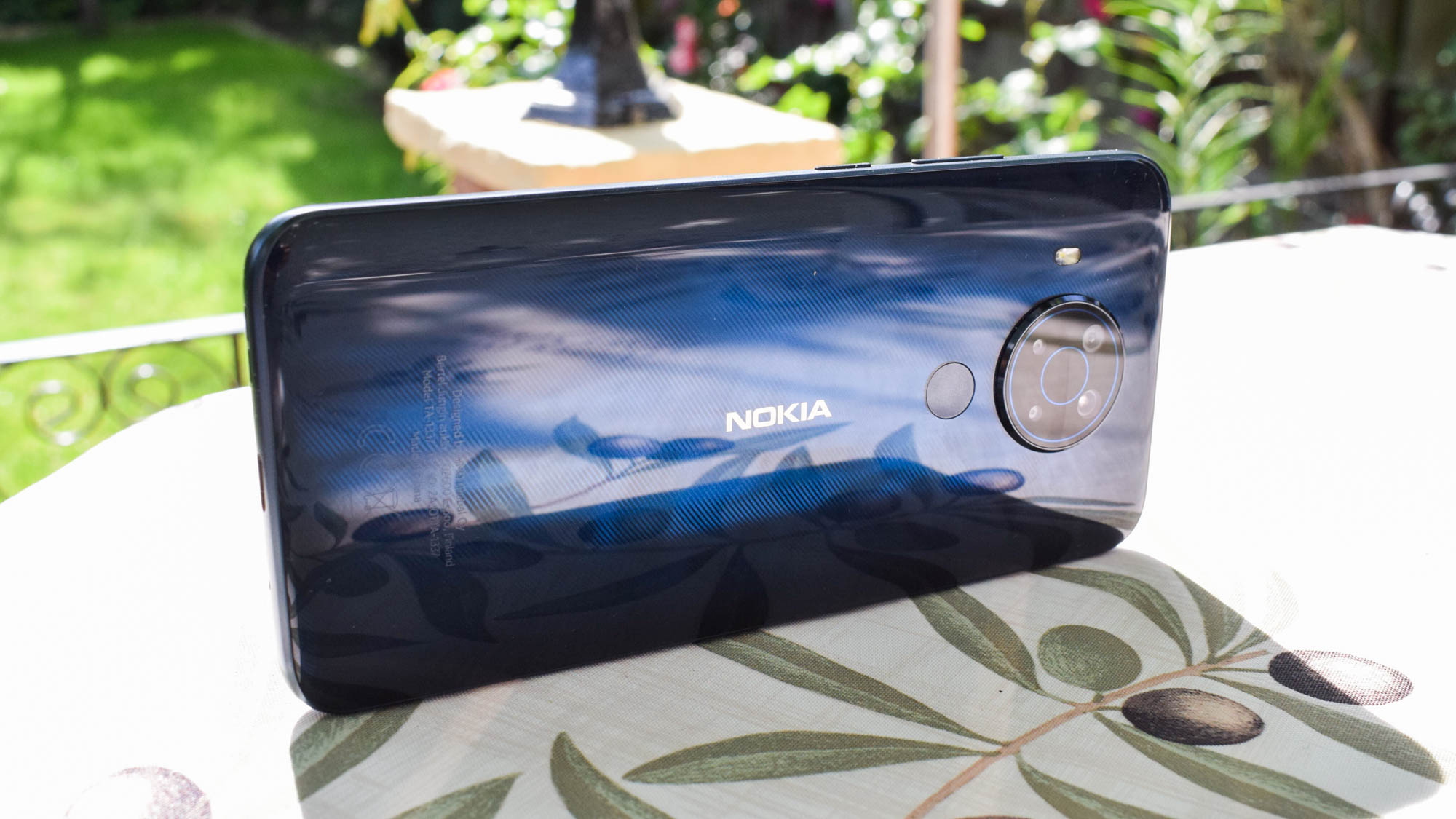
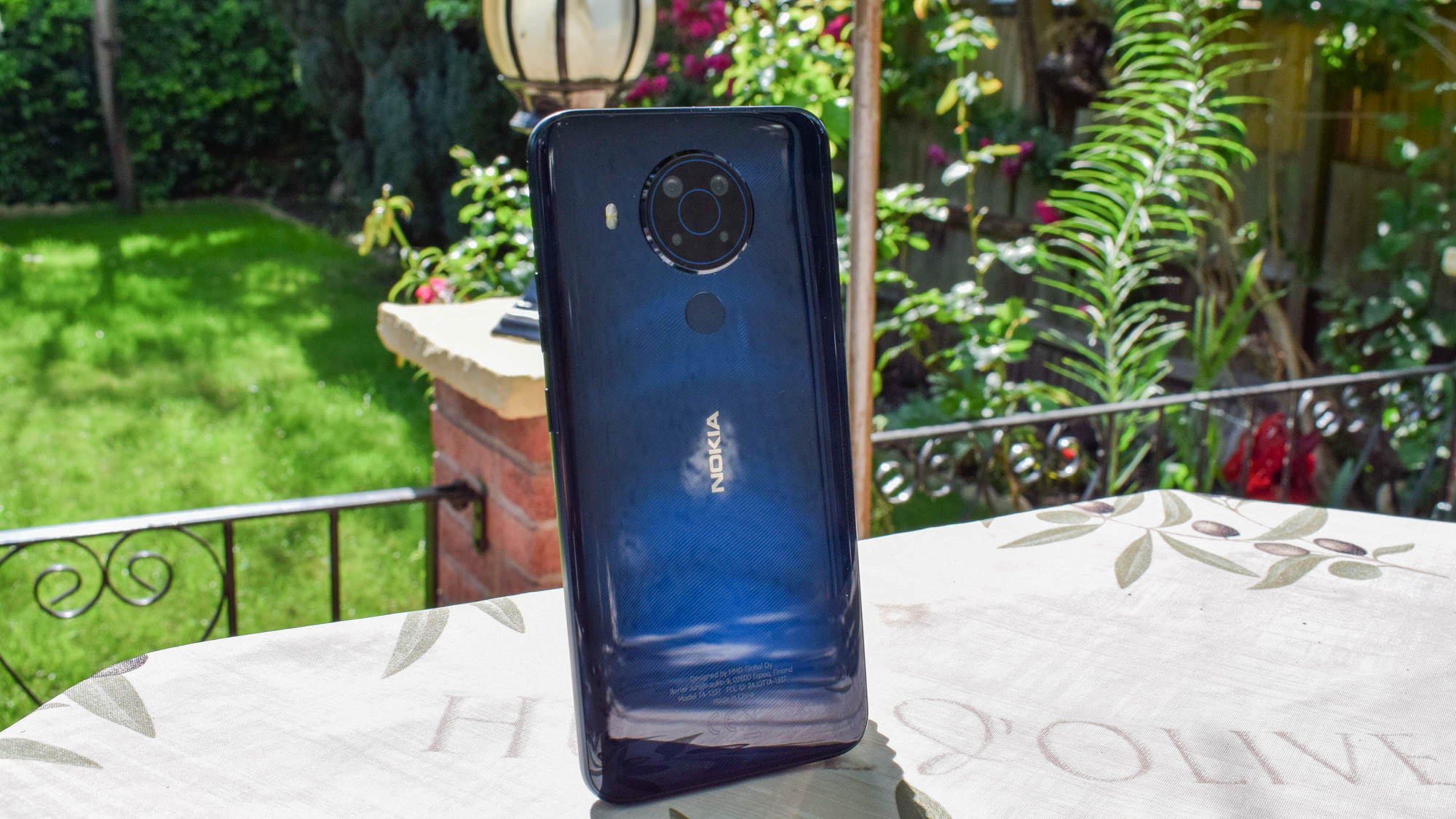
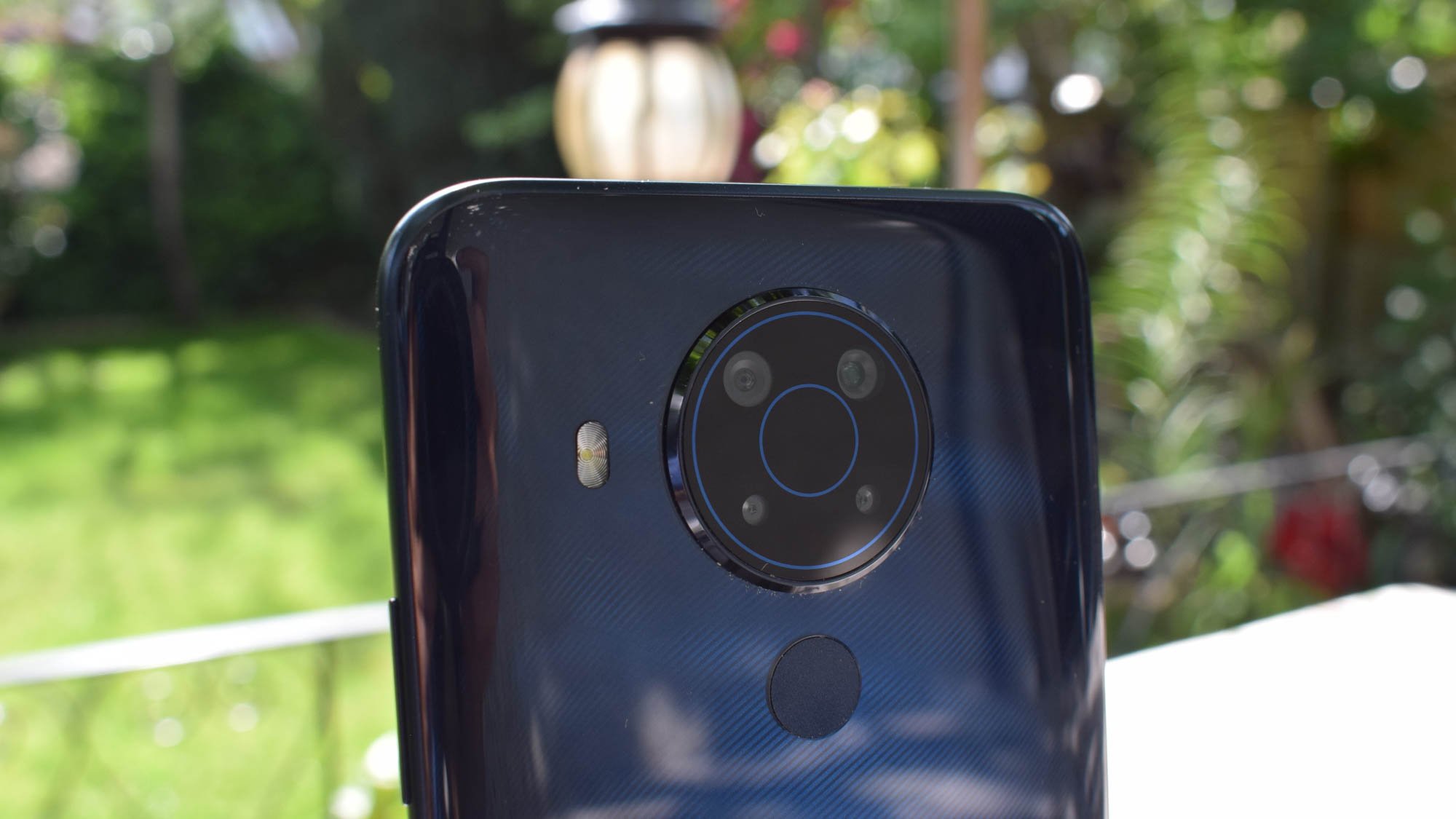
When Nokia released its bargain-bucket Android handset, the Nokia 5.3, last year, we were impressed with what the manufacturer was able to package into one of the cheapest smartphones that money can buy. With solid mid-range challengers becoming even more commonplace, impressive, and cheap, there’s no reason why a manufacturer like Nokia shouldn’t push the envelope and try to fit as much as it can into a basic shell.
The Nokia 5.4 is similarly priced to its predecessor and features a similar hardware configuration, but it also shares its limitations. The display is still restricted to 720p and the CPU is fairly basic, although it promises an improved camera and a much better-looking exterior. However, its most immediate challengers, such as the Samsung Galaxy M31 and Xiaomi Redmi Note 9T - both priced under £250 - have impressed by offering considerable value for money alongside better hardware.
Nokia 5.4 review: Design
The handset’s impressive Polar Night plastic chassis is a substantial improvement on the 5.3’s exterior, which felt relatively cheap. While its predecessor’s build was solid for its price, this is a class above. On first glance, you’d struggle to accurately place this handset on the pricing spectrum, although the feel of the plastic casing does give the game away. With the 5.4, Nokia has ditched a bland trio of Charcoal, Sand and Cyan hues in favour of an immersive multi-toned blue that benefits from a reflective finish. It’s also available in an equally impressive maroon-inspired Dusk.
The design largely remains unchanged, although this smartphone’s a little smaller than the Nokia 5.3, with a screen measuring 6.4in versus 6.55in. The 5.4’s rear, meanwhile, is fitted with four camera lenses and a flash module arranged in an attractive wheel formation above a small fingerprint scanner. There isn’t much separating the Nokia 5.4 from similar devices in this price range in terms of its 180g mass, or screen size. We can look, for example, to the Samsung Galaxy M31 which is heavier but occupies roughly the same dimensions.
Nokia 5.4 review: Display
The 720 x 1,560 display is almost identical to that fitted into the Nokia 5.3 - if you can look beyond the fact it’s a little smaller. In that spirit, it’s just as bright and beaming, although it still uses a 720p resolution and a pixel density of roughly 270ppi. You wouldn’t expect fireworks, given its cost, but with 1080p-plus panels now standard in most handsets priced £250 and upwards, icons and menus can seem a little rough around the edges, while video playback does suffer somewhat.

Our testing confirms just how bright this display can get, however, with a maximum luminescence of 436cd/m2 that’s well above average, and certainly on a par with a few high-end smartphones. Among its competitors, the Samsung Galaxy M31 scored 374cd/m2, while the Xiaomi Redmi Note 9T hit 403cd/m2.
Colour accuracy and coverage offer a mixed bag, though, with 85.4% coverage of the sRGB colour gamut indeed better than the Nokia 5.3’s 80.5%, but still well below average. Although this is hardly a surprise, both Samsung and Xiaomi’s devices registered scores close to 100%.
This display’s Delta E rating, which measures accurate colour reproduction, reinforced this shortcoming with a score of 3.05. We would consider results between one or two to be acceptable, with scores under one considered outstanding. Despite these underwhelming scores, in practice, the colours and saturation levels were reasonable, although blues were slightly oversaturated.
Nokia 5.4 review: Hardware and performance
In keeping with its low-end display, the Nokia 5.4 is fitted with relatively modest hardware in the form of the Qualcomm Snapdragon 662 mobile CPU, alongside 4GB RAM and 64GB internal storage, which can be expanded via microSD.
This chip is objectively a weak performer, but no more so than you’d expect. Testing through Geekbench 5 rendered a single-threaded performance score of 287 and a multi-threaded result of 1,345. That’s edging out the Samsung Galaxy M31’s scores of 264 and 1,219, but this actually represents a step backwards for Nokia’s budget handset.

To begin with, the older Nokia 5.3 (fitted with a Snapdragon 665 chip) marginally outperforms its successor, registering scores of 311 and 1,402. This was also on par with some mid-range handsets at the time, such as the Google Pixel 3a, which registered 343 and 1,296. Fast forward to now, and performance levels have surged in the mid-range bracket. Cheaper phones, with better hardware, such as the Xiaomi Redmi Note 9T, have also dipped in price to the extent they aren’t far from the Nokia 5.4. The Note 9T, for example, scored 596 and 1,729, and its MediaTek Dimensity 800U chip is paired with 8GB RAM.
Similarly, the Nokia 5.4’s battery life of 12hrs 51mins is very poor, given the Nokia 5.3 lasted a full two hours longer when tested. The display doesn’t exceed a 720p resolution either, with most alternatives at least 1080p and lasting longer. There are weaker performers out there, such as the second-generation iPhone SE which lasted 11hrs 35mins, but the Xiaomi Redmi Note 9T lasted 18hrs 10mins, by way of comparison. The Sa msung Galaxy M31, meanwhile, is one of the longest lasting handsets full stop, with a maximum battery capacity of 30hrs 20mins. The phone does feature a fast-charging feature, but this doesn’t make up for the poor battery capacity overall.
Nokia 5.4 review: Camera
RELATED RESOURCE

User risk report: Educate your workforce to protect your organisation
Exploring vulnerability and behaviour in a people-centric threat landscape
Featuring four separate rear lenses, the Nokia 5.4’s camera array is, on paper, impressive for what you’d expect in a budget handset. The overall configuration is an improvement on last year’s model given the inclusion of a 48MP primary lens in place of its 13MP main lens, while the 5MP ultrawide-angle lens, 2MP macro and 2MP depth lenses are all unchanged. Nokia has also doubled the megapixel count in the 16MP front-facing holepunch camera.
Although it strives to mirror the photography experience of a more advanced smartphone, the Nokia 5.4’s camera inevitably shows up its shortcomings. Images often seem too sharpened and a little washed out. A handful of useful software enhancements, including HDR shooting and a dedicated portrait mode, add a little more to an otherwise basic setup, although these don’t necessarily improve the quality of the photos.
Much like the Nokia 5.3, however, a weak processor means using the camera can be frustrating due to movement lag. This manifests as jitters using some of the most advanced tools, and a delay when panning. It’s more noticeable when shooting video, given it involves a lot of movement. Video, incidentally, can be shot at up to 4K resolution at 30fps using the rear cameras, or up to 1080p resolution using the selfie-cam.

Nokia 5.4 review: Software and features
The Android One operating system, built on Android 10, is very much a stripped-back version of what Android can offer, designed for low-powered phones. Users can customise the UI and add widgets, but the operating system lacks advanced display customisation and the video processing features included in high-powered handsets. There’s little room for enterprise security tools, but Android One does come with Google Play Protect and Google malware-scanning capabilities built-in.
Thankfully, there’s also minimal bloatware, and the user experience (UX) is generally intuitive and smooth. We would recommend switching the navigation system to the three staple nav buttons, as opposed to the clumsy gesture-based navigation that’s enabled by default, however. You can also use a variety of alternative gestures to trigger commands, all of which come standard with Android One, including double-tapping the screen to wake the display, and swiping the rear-mounted fingerprint scanner to show your notifications. At this price, you can forget about an in-screen fingerprint scanner, although the front-facing pinhole camera supports facial recognition in any case.
Sadly, 5G hasn’t made it to the Nokia 5.4, which is a blow given you’ll struggle these days to find devices across the spectrum that don’t support it. On the other hand, with 5G coverage still not universal, and the Nokia 5.4 likely not to be the sort of phone you’d get for future-proofing purposes, it’s not a guaranteed deal-breaker. Bog-standard 4G connectivity is still as effective as ever.
Nokia 5.4 review: Verdict
Priced at £130, the Nokia 5.3 was a bargain bucket device that punched well above its weight and made a lasting impression as a result. Standards have since risen across the board though, and we can see phones around the £250 mark offering more robust hardware and 5G support. This means, sadly, that while the Nokia 5.4 has made meaningful strides upon its predecessor, it’s taken a step back compared to the rest of the industry. Its display and camera offer only marginal improvements, while performance and battery life are weaker than last year’s model.
We should stress, the Nokia 5.4 is among the best you can get at this price, and you can hardly do better for £150. The price gap between this and the next best thing, however, isn’t as wide as it once was. Push your budget that little bit further, and you suddenly open yourself up to a significant hardware upgrade, with 5G connectivity the cherry on top.
Nokia 5.4 specifications
| Processor | Octa-core Qualcomm Snapdragon 662 |
| RAM | 4GB |
| Screen size | 6.39in |
| Screen resolution | 1560 x 720 |
| Pixel density | 269ppi |
| Screen type | IPS LCD |
| Front camera | 16MP f/2.0 |
| Rear camera | 48MP f/1.8 wide, 5MP 13mm ultrawide, 2MP macro, 2MP depth |
| Dust and water resistance | n/a |
| 3.5mm headphone jack | Yes |
| Wireless charging | No |
| Connection type | USB-C |
| Storage options | 64GB |
| Memory card slot | Yes |
| Bluetooth | 4.2 |
| NFC | Yes |
| Cellular data | 4G |
| Dual SIM | Yes |
| Dimensions (WDH) | 164.3 x 76.6 x 8.5mm |
| Weight | 181g |
| Operating system | Android One |
| Battery size | 4,000mAh |
Get the ITPro daily newsletter
Sign up today and you will receive a free copy of our Future Focus 2025 report - the leading guidance on AI, cybersecurity and other IT challenges as per 700+ senior executives

Keumars Afifi-Sabet is a writer and editor that specialises in public sector, cyber security, and cloud computing. He first joined ITPro as a staff writer in April 2018 and eventually became its Features Editor. Although a regular contributor to other tech sites in the past, these days you will find Keumars on LiveScience, where he runs its Technology section.
-
 ‘Phishing kits are a force multiplier': Cheap cyber crime kits can be bought on the dark web for less than $25 – and experts warn it’s lowering the barrier of entry for amateur hackers
‘Phishing kits are a force multiplier': Cheap cyber crime kits can be bought on the dark web for less than $25 – and experts warn it’s lowering the barrier of entry for amateur hackersNews Research from NordVPN shows phishing kits are now widely available on the dark web and via messaging apps like Telegram, and are often selling for less than $25.
By Emma Woollacott Published
-
 Redis unveils new tools for developers working on AI applications
Redis unveils new tools for developers working on AI applicationsNews Redis has announced new tools aimed at making it easier for AI developers to build applications and optimize large language model (LLM) outputs.
By Ross Kelly Published
-
 Google layoffs continue with "hundreds" cut from Chrome, Android, and Pixel teams
Google layoffs continue with "hundreds" cut from Chrome, Android, and Pixel teamsNews The tech giant's efficiency drive enters a third year with devices teams the latest target
By Bobby Hellard Published